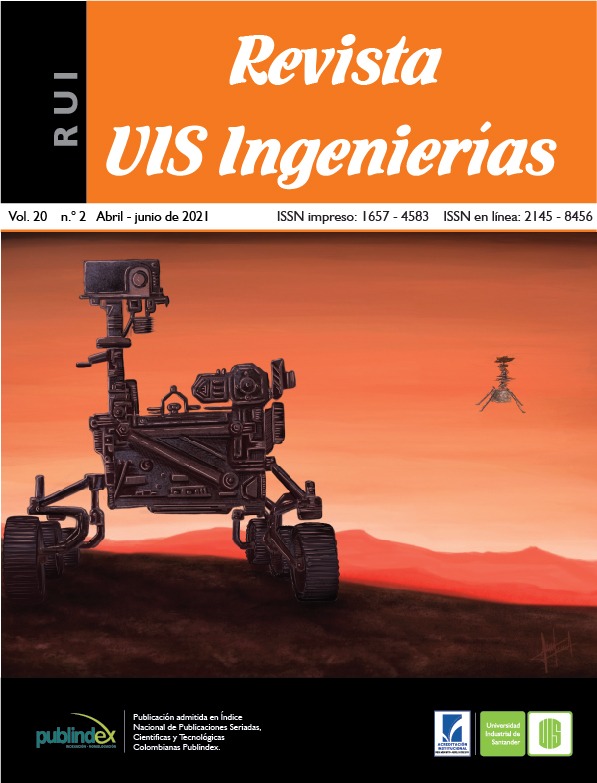Generator of stochastic bivariate variable applied to stochastic Bayesian DEA
Published 2021-02-18
Keywords
- data envelopment analysis,
- Bayesian DEA,
- stochastic DEA,
- efficiencies,
- multivariate normal distribution
- bivariate generator,
- education sector,
- simulation,
- probability density functions,
- nonlinear programming,
- convex cones,
- optimization ...More
How to Cite
Abstract
The application of stochastic DEA models using Bayesian Statistics is a technique that has been emerging in recent years, to be used it, simulation of multivariate probability distributions is necessary. A bivariate generator for continuous variable will be presented. Additionally, a discretization has been created on it to achieve simulations of a posteriori distributions with easy way to apply it. Application of the generator to two functions of bivariate probability density will be presented, one of them normal, with their respective tests of goodness of fit. Data from the education sector was used in the database of the DANE (National Administrative Department of Statistics) Colombia to solve the problem of a Bayesian stochastic DEA model. The results show the utility, power and easy implementation of the generator proposed in this type of problem.
Downloads
References
[2] M. Bruni, D. Conforti, P. Beraldi, E. Tundis, “Probabilistically constrained models for efficiency and dominance in dea”, International Journal Production Economics, vol. 117, no. 1, pp. 219-228, 2009, doi: 10.1016/j.ijpe.2008.10.011
[3] L. Simar, P. Wilson, “Sensitivity analysis of efficiency scores: How to bootstrap in nonparametric frontier models”, Management Science., vol. 44, no. 1, pp. 49-61, 1998, doi: 10.1287/mnsc.44.1.49
[4] L. Simar, P. Wilson, “Statistical inference in non-parametric frontier models: the state of the art”, Journal of Productivity Analysis, vol. 13, pp. 49-78, 2000, doi: 10.1023/A:1007864806704
[5] R. Dyson, E. Shale, “Data envelopment analysis, operational research and uncertainty”, Journal of Operational Research Society, vol. 61, pp. 25-34, 2010, doi: 10.1057/jors.2009.145
[6] M. Ceyhan, J. Banneyan, “Handling estimated proportions in public sector data envelopment analysis”, Annals of Operational Research, vol. 221, pp. 107-132, 2014, doi: 10.1007/s10479-011-1007-z
[7] E. Tsionas, E. Papadakis, “A bayesian approach to statistical inference in stochastic dea”, Omega, vol. 38, no. 5, pp. 309-314, 2010, doi: 10.1016/j.omega.2009.02.003
[8] P. Mitropoulos, M. Talias, I. Mitropoulos, “Combining stochastic dea with bayesian analysis to obtain statistical properties of the efficiency scores: An application to greek public”, Mathematical and Computer Modelling hospitals, vol. 243, no. 1, pp. 302-311, 2015, doi: 10.1016/j.ejor.2014.11.012
[9] W. Cooper, Z. Huang, S. Li, “Change constrained DEA”, en Handbook on data envelopment analysis, 2nd ed. Boston: Springer US, 2011, pp. 211-240.
[10] D. Friesner, R. Mittelhammer, R. Rosenman, “Inferring the incidence of industry inefficiency from dea estimates”, European Journal of Operational Research, vol. 224, no, 2, pp. 414-424, 2013, doi: 10.1016/j.ejor.2012.08.003
[11] A. Charnes, W. Cooper, E. Rhodes, “Measuring the efficiency of decision making units”, European Journal of Operation Research, vol. 2, no. 6, pp. 429-444, 1978.
[12] K. Land, C. Lovell, S. Thore, “Productive efficiency under capitalism and state socialism: An empirical inquiry using chance-constrained data envelopment analysis”, Technological Forecasting and Social Change, vol. 46, no. 2, pp. 139-152, 1994, doi: 10.1016/0040-1625(94)90022-1
[13] K. Land, C. Lovell, S. Thore, “Chance-constrained data envelopment analysis”, Managerial and Decision Economics, vol. 14, pp. 541-554, 1993, doi: 10.1002/mde.4090140607
[14] K. Land, C. Lovell, S. Thore, “Productive e fficiency under capitalism and state socialism: the chance constrained programming approach”, Supplement to Public Finance, vol. 47, pp. 109-121, 1992.
[15] K. Land, C. Lovell, S. Thore, “Chance constrained data envelopment analysis”, Managerial and Decision Economics, vol. 14, no. 6, pp. 541-554, 1993, doi: 10.1002/mde.4090140607
[16] W. Cooper, L. Seiford, K. Tone, Data envelopment analysis: a comprehensive text with models, aplications, references and DEA-solver software, Second edition. New York, NY, USA: Springer, 2007.
[17] C. Subhash, Data envelopment analysis: theory and techniques for economics and operations research. New York, NY, USA: Cambrige University Press, 2004.
[18] J. Vargas, Simulación Basada en Probabilidad. Manizales: Universidad Autónoma de Manizales, 2013.
[19] S. Korkmaz, D. Goksuluk, G. Zararsiz, “MVN: An r package for assessing multivariate normality”, The R Journal, vol. 6, no. 2, pp. 151-162, 2014.
[20] DANE, “Educación formal educ,” [En línea]. Disponible en: http://www.dane.gov.co/index.php/estadisticas-por-tema/educacion/poblacion-escolarizada/educacion-formal
[21] R. d. C. Ministerio de Educación Nacional, “Educación de calidad,” [En línea]. Disponible en: http://www.mineducacion.gov.co/1621/article-123912.html
[22] A. Mosek, “The mosek optimization toolbox for matlab manual”, Mosek ApS, Denmark, Tech. Rep. version 7.1, revision 6.0.


